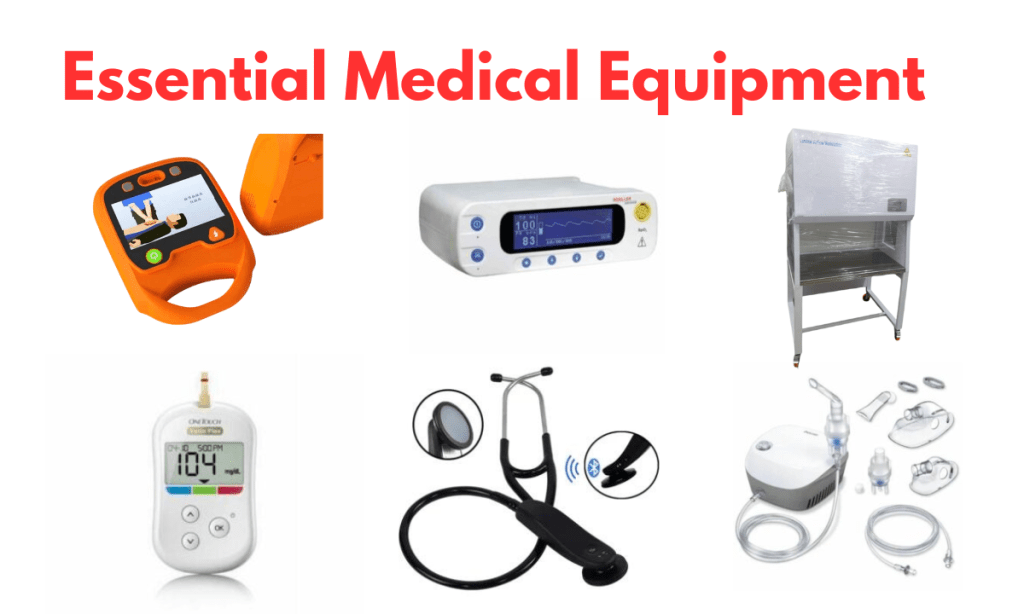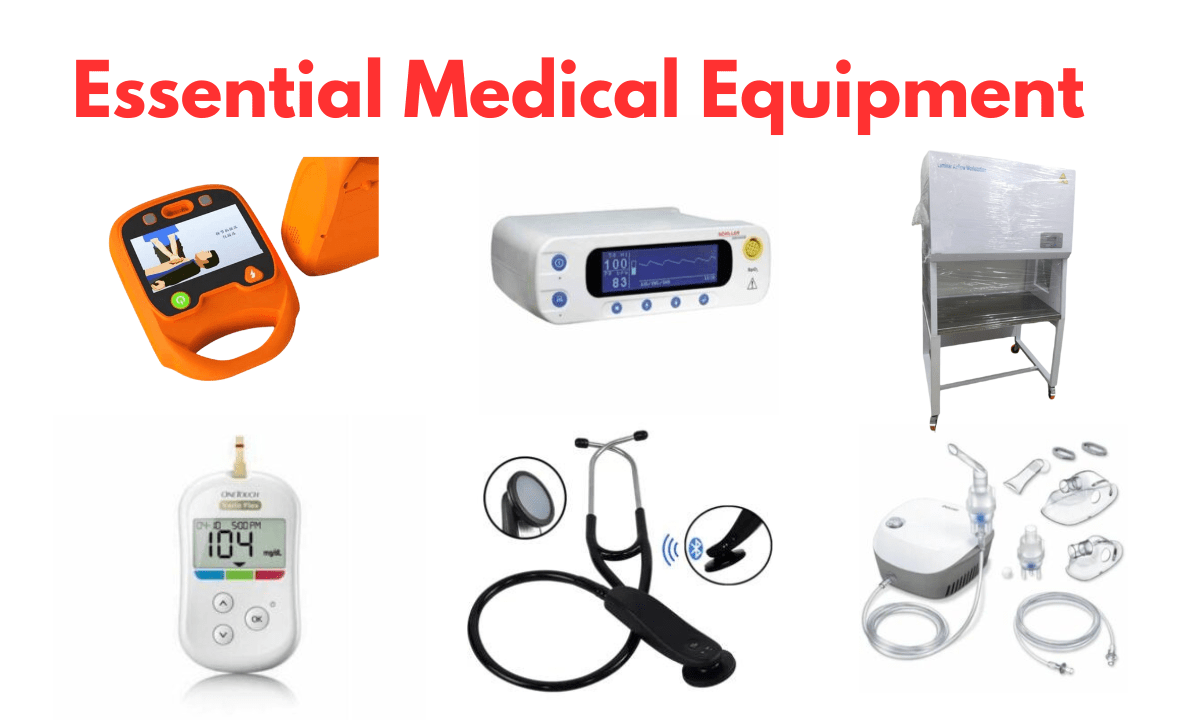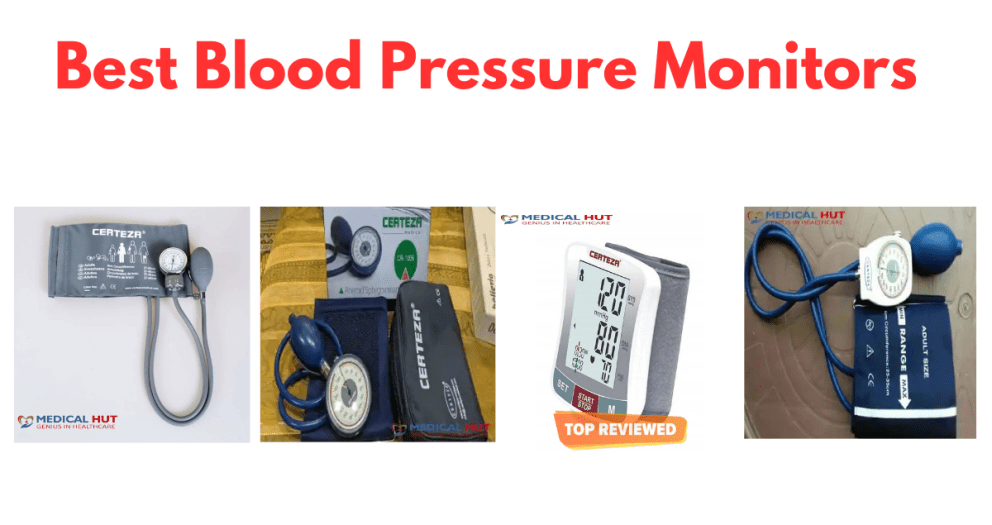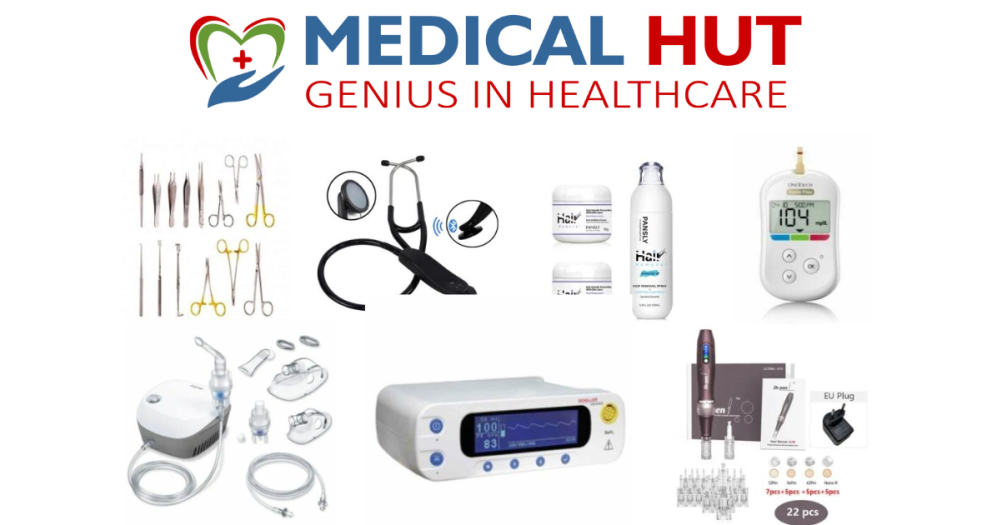Healthcare in Pakistan is a fast-evolving region, marked by way of sizable changes in infrastructure, policy, and medical technology. Yet, one element stays a cornerstone of powerful care: medical equipment. For healthcare vendors in Pakistan, having access to the right gear and devices is essential no longer only for analysis and remedy but additionally for enhancing patient consequences and average healthcare first-class.

Hospital gadgets play a vital role in supplying first-class care to sufferers. From monitoring essential signs to performing life-saving methods, the proper gadget can make all of the difference in a patient’s final results. In this newsletter, we will explore the exclusive forms of devices utilized in hospitals and how nurses and doctors make use of those tools to offer nice viable care for their patients.
Healthcare in Pakistan
Urban hospitals in essential cities like Karachi, Lahore, and Islamabad regularly have higher access to superior medical technologies, from imaging gadgets to surgical tools. However, additionally, they contend with massive patient inflows, straining their capacity and assets. In comparison, rural clinics and small hospitals function with restricted supplies and personnel, making the availability of crucial medical gadgets all the extra crucial.
In response to the growing demand for medical equipment, Medical Hut has emerged as Pakistan’s largest medical equipment supplier. The company provides a wide range of high-quality medical devices, from diagnostic tools to surgical instruments, catering to both urban hospitals and under-resourced rural clinics. Medical Hut’s extensive network and distribution capabilities have made it a key player in addressing the equipment shortages across Pakistan, helping to bridge the gap between healthcare facilities in different regions.
Here are some of the important medical equipment that every clinic, hospital, and healthcare professional needs.
Diagnostic Equipment
At the coronary heart of each healthcare facility are diagnostic tools. Without proper analysis, a remedy will become a recreation of guesswork, main to headaches or maybe fatal consequences.
In Pakistan, common diagnostic tools consisting of stethoscopes, sphygmomanometers (for blood strain monitoring), thermometers, and pulse oximeters are crucial. These may additionally appear like primary contraptions, however in rural areas, they often form the foundation of patient care. Due to economic constraints, many clinics make do with old or malfunctioning equipment, affecting prognosis accuracy.
Point-of-Care Devices
One of the emerging developments in healthcare globally, consisting of in Pakistan, is the use of point-of-care trying out (POCT) devices. These transportable diagnostic tools permit healthcare providers to carry out assessments at the patient’s bedside or in remote places, supplying results in actual time.
Point-of-care gadgets permit short selections and reduce the delay in remedy, which can every so often make the difference between life and dying.
Surgical Equipment
In emergency rooms and surgical departments, the provision of the right surgical units is essential. Basic surgical tools like scalpels, forceps, retractors, and sutures are indispensable for any healthcare facility, whether it’s a tertiary clinic in Lahore or a district clinic in Baluchistan.
More complex surgical techniques require specialized gadgets consisting of electrosurgical units, laparoscopic units, anesthesia machines, and autoclaves for sterilization. In Pakistan, massive public hospitals just as the Aga Khan University Hospital in Karachi and Shaukat Khanum Memorial Cancer Hospital in Lahore are highly prepared with superior surgical gear, allowing them to address complex tactics like organ transplants, cancer surgeries, and neurosurgical interventions.
However, smaller hospitals and rural clinics often battle with a lack of even basic surgical devices.
Respiratory Equipment
Pakistan has one of the highest rates of respiration ailments in the world. Tuberculosis, chronic obstructive pulmonary ailment (COPD), and asthma have placed a heavy burden on the healthcare machine. This makes respiration devices important in each hospital and clinic.
Oxygen cylinders, nebulizers, ventilators, and CPAP (Continuous Positive Airway Pressure) machines are vital in coping with breathing emergencies. While large hospitals in city centers typically have enough get right of entry to to those machines, rural healthcare carriers often must manipulate without sufficient respiratory devices, leaving patients prone in critical conditions.
The recent COVID-19 pandemic uncovered the gaps in respiratory care infrastructure in Pakistan, with many hospitals struggling to fulfill the demand for ventilators. The pandemic underscored the importance of getting an adequate supply of respiration gadgets, not just for emergencies, but as a staple of normal healthcare
Sterilization and disinfection of substances
Sterilization and disinfection substances are crucial clinical supplies for every practice to have on hand if you want to ensure a smooth and safe environment for sufferers and healthcare providers. These components consist of gadgets consisting of sterilization devices including autoclaves, disinfectants, and a personal shielding system (PPE) for use throughout the sterilization and disinfection system.
Sterilization is the system of destroying all forms of microbial existence, such as bacteria, viruses, and fungi. This is crucial in healthcare settings to save you from the unfolding of infections. Sterilization may be carried out through numerous techniques, together with using an autoclave (a tool that uses steam, stress, and heat to sterilize gadgets) or with the aid of the usage of chemical sterilants.
Disinfection is the system of killing or inactivating maximum varieties of infectious agents on surfaces and systems. Disinfectants may be used to clean and decontaminate surfaces and systems in healthcare settings to save you the unfold of infections. It is vital to use the perfect disinfectant for the unique floor or gadget being cleaned and to follow the producer’s instructions for use.
By having a sufficient supply of sterilization and disinfection supplies available, healthcare practices can make sure that they’re capable of maintaining a clean and secure environment for patients and healthcare carriers.
Bandages and wound care resources
Bandages and wound care supplies are important scientific resources for each exercise to have available.
These are portions of material or different materials that are used to cover and defend wounds. There are many special styles of bandages available, including adhesive bandages (additionally known as “Band-Aids“), gauze bandages, and elastic bandages. Bandages may be used to shield wounds, preserve dressings in location, and apply stress to prevent bleeding.
Wound care elements are used to smooth, treat, and guard wounds. These substances may additionally consist of items such as antiseptic solutions, wound dressings, and ointments. Proper wound care is critical which will prevent infection and sell restoration.
By having enough supply of bandages and wound care resources reachable, healthcare practices can make sure that they’re prepared to treat and take care of accidents, cuts, and wounds.
Laboratory resources
Laboratory materials are essential medical elements for each practice to have available which will perform diagnostic tests and analyses. These supplies can consist of items consisting of test tubes, petri dishes, pipettes, and microscopes.
Having a sufficient delivery of laboratory components is crucial if you want to as it should be diagnosed and dealt with by sufferers. It is essential to regularly take a look at and replace expired or depleted laboratory resources, and to follow proper usage and storage recommendations to ensure the accuracy and safety of the exams and analyses.
There are many extraordinary types of laboratory resources and the unique items that an exercise desires will rely upon the form of exams and analyses they perform. It is vital to carefully keep in mind the wishes of the practice and the sufferers whilst selecting which laboratory resources to purchase.
By having a properly stocked stock of laboratory resources, healthcare practices can make certain that they have the vital equipment to carry out diagnostic checks and analyses as it should be and successfully.
Emergency medical materials
Emergency medical supplies are vital scientific elements for every exercise to have available with the intention to be organized for surprising emergencies. These elements can include gadgets such as epinephrine injectors, automatic external defibrillators (AEDs), and basic life support (BLS) resources.
Having a sufficient delivery of emergency clinical supplies is vital to be able to provide timely and effective treatment to patients in the event of an emergency. It is critical to frequently take a look at and update expired or depleted emergency scientific substances, and to comply with proper utilization and renovation recommendations to ensure their effectiveness.
There are many extraordinary varieties of emergency scientific resources and the particular items that a practice desires will rely upon the kind of emergencies they’ll encounter. It is crucial to cautiously not forget the wishes of the exercise and the patients when selecting which emergency clinical resources to buy.
Rehabilitation and therapy resources
Rehabilitation and therapy resources are important scientific components for every exercise to have available a good way to offer rehabilitation and therapy offerings to patients. These materials can consist of items including exercise equipment, remedy balls, and mobility aids.
Having a sufficient supply of rehabilitation and remedy resources is essential so one can offer excellent care to sufferers. Rehabilitation and remedy can assist patients recover from injuries, surgical procedures, and different conditions, and can also assist in enhancing their average features and fine of existence.
There are many distinct types of rehabilitation and remedy resources and the particular items that an exercise desires will rely on the kind of rehabilitation and therapy offerings they provide. It is critical to carefully recollect the desires of the exercise and the patients whilst choosing which rehabilitation and remedy components to buy.
Conclusion
This consists of checking for expired or depleted elements and changing them as wished, in addition to thinking about the wishes of the exercise and the sufferers while buying new resources. By regularly reviewing and updating the scientific supply inventory, healthcare practices can make sure that they have the vital equipment to offer the most satisfactory possible care to their patients.
Investing in important clinical devices, in particular in underserved areas, is key to improving healthcare effects. While city hospitals continue to enhance in terms of generation and gadgets, the focus should additionally shift to rural healthcare providers who are on the frontlines of affected person care but regularly lack the equipment they want to keep lives.






Write a comment
Your email address will not be published. All fields are required